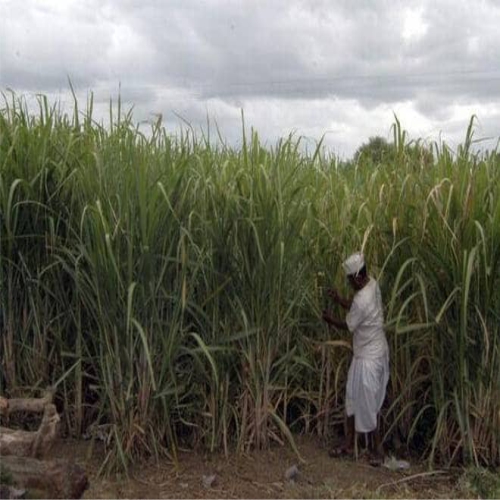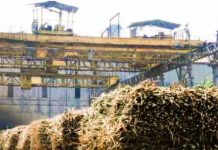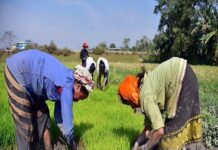New Delhi [India], February 4 (ANI): The Indian government launched Pradhan Mantri Fasal Bima Yojana (PMFBY) in 2016 to address the issue of farmers’ inability to get crop insurance due to lack of money, high premium rates, and capping. The scheme has completed six years of its implementation.
The PMFBY is aimed at giving farmers a simple and affordable crop insurance option to ensure comprehensive risk coverage for crops against all natural risks from pre-sowing to post-harvest and provide adequate claim amounts. The demand-driven scheme is available to all farmers.
Under this scheme, it has become easier for the farmer to report crop loss within 72 hours of any incident through Fasal Bima App, Citizens Service Centre, or nearest agriculture officer.
During this period claims of more than Rs 1,24,223 crore have been paid to more than 11.73 crore farmer applicants. During this period, farmers had paid a premium of about Rs 25,185 crore. That is, the farmers have received almost five times the premium paid (received Rs 493 on payment of Rs 100 premium) as claims.
The Indian government has revamped the Pradhan Mantri Fasal Bima Yojana in the kharif season 2020. The most important change had been made that instead of 50 per cent, the central government now gives a 90 per cent share in the subsidy for crop insurance to the farmers of the northeastern states.
The state government has to pay only a 10 per cent subsidy.
Now, there is no fear of risk related to weather. PMFBY is available to all states and Union Territories (UT) on a voluntary basis.
So far, 27 states/UTs have implemented PMFBY in one or more seasons. Assam, Chhattisgarh, Goa, Haryana, Himachal Pradesh, Jammu and Kashmir, Karnataka, Kerala, Madhya Pradesh, Manipur, Meghalaya, Odisha, Puducherry, Rajasthan, Sikkim, Tamil Nadu, Tripura, Uttar Pradesh, and Uttarakhand have already notified for the implementation of PMFBY in FY2022-23. It also provides coverage against crop loss due to landslides, hailstorms, floods, droughts, cloudbursts, and natural fires.
India is one of the major players in the agriculture sector worldwide and the sector is the primary source of livelihood for about 58 per cent of its population. India has the world’s largest cattle herd (buffaloes), the largest crop area for wheat, rice, and cotton, and is the largest producer of milk, pulses, and spices in the world. It is the second-largest producer of fruit, vegetables, tea, farmed fish, cotton, sugarcane, wheat, rice, cotton, and sugar.
Agriculture sector in India holds the record for the second-largest agricultural land in the world, generating employment for about half of the country’s population. Thus, farmers became an integral part of the sector to provide us with the means of sustenance, according to India Brand Equity Foundation.
Consumer spending in India will return to growth in 2021 post the pandemic-led contraction and expand by as much as 6.6 per cent. The Indian food industry is poised for huge growth, increasing its contribution to world’s food trade every year due to its immense potential for value addition, particularly within the food processing industry. The Indian food processing industry accounts for 32 per cent of the country’s total food market, one of the largest industries in India and is ranked the fifth in terms of production, consumption, export and expected growth.
According to Inc42, the Indian agricultural sector is predicted to increase to USD 24 billion by 2025. Indian food and grocery market is the world’s sixth largest, with retail contributing 70 per cent to the sales.
As per the First Advance Estimates for FY 2022-23 (kharif only), the total foodgrain production in the country is estimated at 149.92 million tonne. Rapid population expansion in India is the main factor that is driving the industry. The rising income levels in rural and urban areas, which have contributed to an increase in the demand for agricultural products across the nation, provide additional support for this.
In accordance with this, the market is being stimulated by the growing adoption of cutting-edge techniques, including blockchain, artificial intelligence (AI), geographic information systems (GIS), drones, and remote sensing technologies, as well as the release of various e-farming applications. (ANI)

















